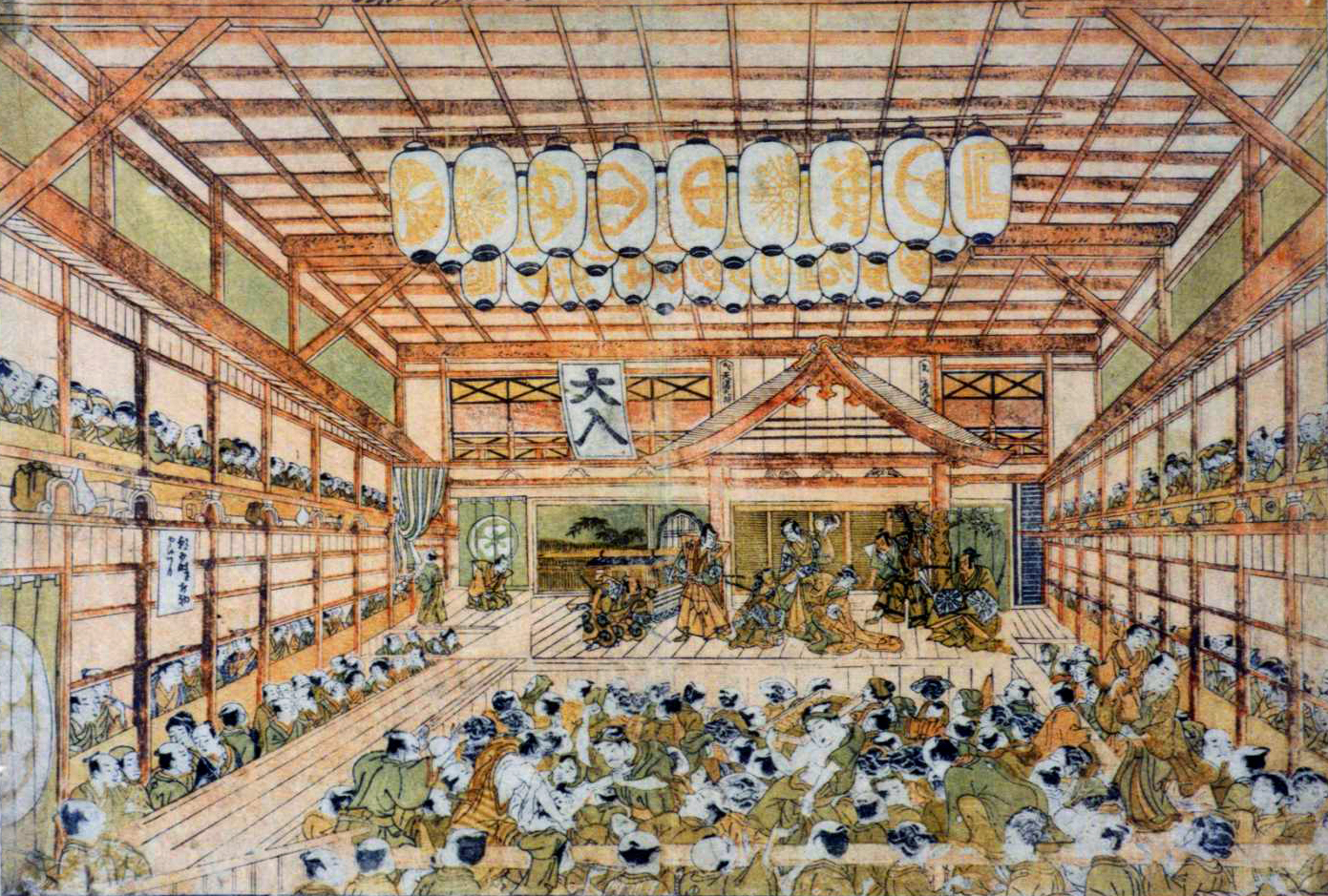Wiki Loves Living Heritage/kabuki
kabuki[edit]
- classical Japanese dance-drama
- Wikidata item: kabuki (Q199701)
- UNESCO ICH ID: RL/00163
- instance of: theatrical genre
- country: Japan
- country of origin: Japan
- subclass of: theatre of Japan
- intangible cultural heritage status: Important Intangible Cultural Property of Japan (), Representative List of the Intangible Cultural Heritage of Humanity () and Masterpieces of the Oral and Intangible Heritage of Humanity ()
- described at URL: https://ich.unesco.org/en/RL/00163 (English)
https://ich.unesco.org/fr/RL/00163 (French)
https://ich.unesco.org/es/RL/00163 (Spanish)
Introduction
How can I contribute?
Add a piece of text
Add an openly licensed piece of text below for annotating. Remember to add the source reference and a reference to the open license. If that is not possible, you can either write an article in Wikipedia, write the piece of text yourself with references, or add references at the bottom of the page.
Enter edit mode and urderline important related topics in the text. This way you can tell others to link them to their Wikidata items.
Pick a highlighted topic and link it to its Wikidata item. If the item is missing, you can create it! You can find instructions in this article.
Texts
Kabuki is a Japanese traditional theatre form, which originated in the Edo period at the beginning of the seventeenth century and was particularly popular among townspeople. Originally, both men and women acted in Kabuki plays, but eventually only male actors performed the plays: a tradition that has remained to the present day. Male actors specialized in women’s roles are called onnagata. Two other major role types are aragoto (rough style) and wagoto (soft style).
Kabuki plays are about historical events and moral conflict in relationships of the heart. The actors speak in a monotone voice and are accompanied by traditional instruments. The Kabuki stage is equipped with several gadgets, such as revolving stages and trapdoors through which the actors can appear and disappear. Another speciality of the Kabuki stage is a footbridge (hanamichi) that extends into the audience. Important characteristics of Kabuki theatre include its particular music, costumes, stage devices and props as well as specific plays, language and acting styles, such as the mie, in which the actor holds a characteristic pose to establish his character. Keshÿ, the particular make-up, provides an element of style easily recognizable even by those unfamiliar with the art form.
After 1868, when Japan opened to Western influence, actors strove to heighten the reputation of Kabuki among the upper classes and to adapt the traditional styles to modern tastes. Today, Kabuki is the most popular of the traditional styles of Japanese drama.[1]
Wikipedia articles
How can I contribute?
Is there already an article in your language about this element?
Read articles about this element by clicking on one of the blue buttons.
You can translate an existing article to your own language by clicking on a white button. You may be asked to enable translation. After you have enabled it, click the back button in your browser to continue from where you were. You can change the source language in the language menu to select a language you know better or that has a more popular article. Start over if you loose track.
This list is generated from data in Wikidata and is periodically updated by a bot.
Edits made within the list area will be removed on the next update!
Images
How can I contribute?
Does this element have a Wikimedia Commons category?
You can find images of this element in the Kabuki category on Wikimedia Commons.
Find all the images on Wikimedia Commons
Find images that are not added to the Wikimedia Commons category. Search Wikimedia Commons to find images that depict kabuki. Add all the images that depict this element to the category and add depicts statements to them.
Add an image to the Wikidata item
Pick the image that you think is the best and add to the kabuki Wikidata item with the image (P18) property.
References
- ↑ "UNESCO - Kabuki theatre". ich.unesco.org. Retrieved 2023-03-11.
Further reading
How can I contribute?
Gather a bibliography
Add source references to this page where they can be used by editors in all Wikipedias. Some of the sources may also be added to Wikidata.

